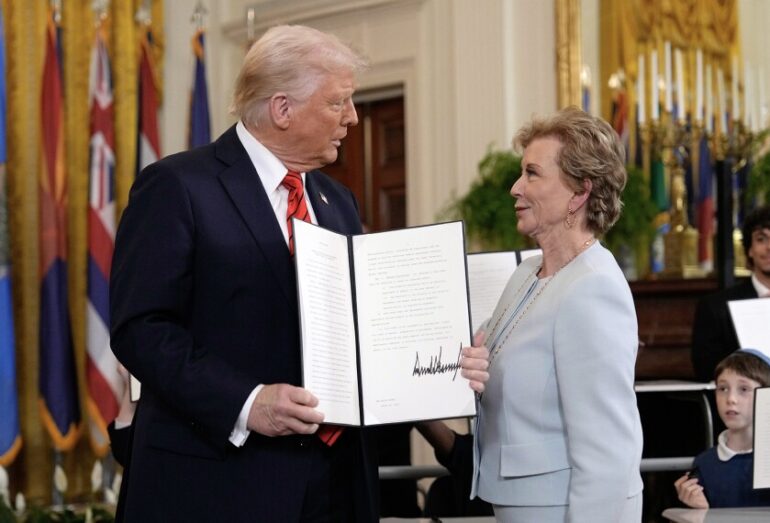In a bold move, President Donald Trump’s administration has unveiled a fiscal year 2026 budget proposal that aims to reshape the U.S. Department of Education, signaling a dramatic shift in how the federal government supports schools and colleges. With a 15% cut to the department’s funding—slashing it from $79.6 billion to $66.7 billion—the plan reflects Trump’s long-standing promise to return education control to the states. Here’s what you need to know about this controversial proposal, released on May 30, 2025, and the changes it could bring to K-12 and higher education.
A Push to Wind Down the Education Department
President Trump has made no secret of his desire to dismantle the U.S. Department of Education. Despite a federal judge blocking his executive order last month to close the agency, the budget proposal doubles down, quoting Trump from March 20, 2025: “We’re going to be returning education very simply back to the states where it belongs.” The document describes an agency “responsibly winding down,” though the $66.7 billion request shows this process will take time. Mass layoffs at the department’s headquarters in March hint at the administration’s determination, but closing a federal agency is a complex, long-term challenge.
Title I Funding Stays Steady
One bright spot for public schools is Title I, a critical program that sends over $18 billion to districts serving high-poverty areas. Many feared this funding, a lifeline for struggling schools, might be cut, especially after calls to do so in the conservative Project 2025 plan. However, the budget keeps Title I funding steady at last year’s level. This has eased some concerns, with groups like The School Superintendents Association (AASA) praising the decision, though they remain wary of other cuts in the proposal.
Big Cuts and Mergers for K-12 Programs
While Title I is safe, other K-12 programs face deep cuts. The budget proposes combining 18 smaller grants—worth $6.5 billion and supporting teacher training, school safety, arts, literacy, rural schools, and homeless students—into one $2 billion block grant. The administration says this gives districts “flexibility” to meet local needs, but critics worry it could hurt vulnerable groups. For example, advocates fear districts might redirect funds away from homeless students, like those helped by Megan Mainzer at Middletown Public Schools in Rhode Island, if specific funding streams vanish. The AASA calls this move a cut “under the guise of efficiency.”
Special Education: A Mixed Picture
The Individuals with Disabilities Education Act (IDEA) ensures kids with disabilities get a free, appropriate education. At first glance, the budget boosts IDEA funding to $14.9 billion, but there’s a catch. It folds six separate programs—like preschool support and parent information centers—into this total, leaving actual funding flat. Professor Meghan Burke from Vanderbilt University notes that while flexible spending might sound good, states may struggle to deliver key services without federal guidance. Parent centers, for instance, could lose their unbiased edge if state-funded, potentially affecting families’ ability to advocate for their kids.
College Aid Takes a Hit
For college students, the news is grim. The budget cuts the maximum Pell Grant—free aid for low-income students—from $7,400 to $5,700, a big drop when the average cost of a public four-year university exceeds $22,000. The Federal Work-Study program, which helps students earn wages, faces an 80% cut, shifting most costs to colleges. Melanie Storey of the National Association of Student Financial Aid Administrators warns this “reverses decades of commitment” to college access, harming students chasing higher education. The administration blames a Pell funding shortfall, but the changes have sparked outrage.
What’s Next?
This budget is just a proposal—Congress will have the final say, and past Republican efforts to slash education funding have faltered. Still, the Trump administration is already acting, canceling billions in teacher training, mental health, and pandemic relief funds. Schools may feel the pinch by July 2026, when 2026 funds roll out. Sarah Abernathy from the Committee for Education Funding urges districts to brace for disruption, especially if the administration withholds already-approved dollars. Will Trump’s vision of state-led education win out, or will Congress push back? The debate is heating up, and the stakes for students, schools, and colleges couldn’t be higher.
